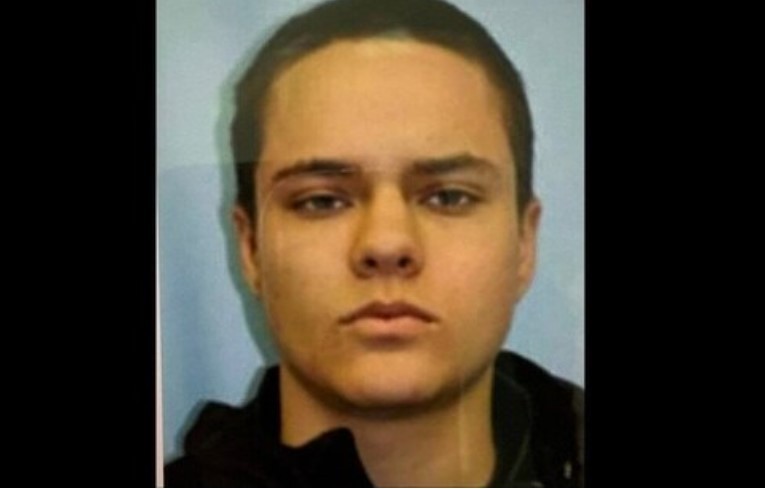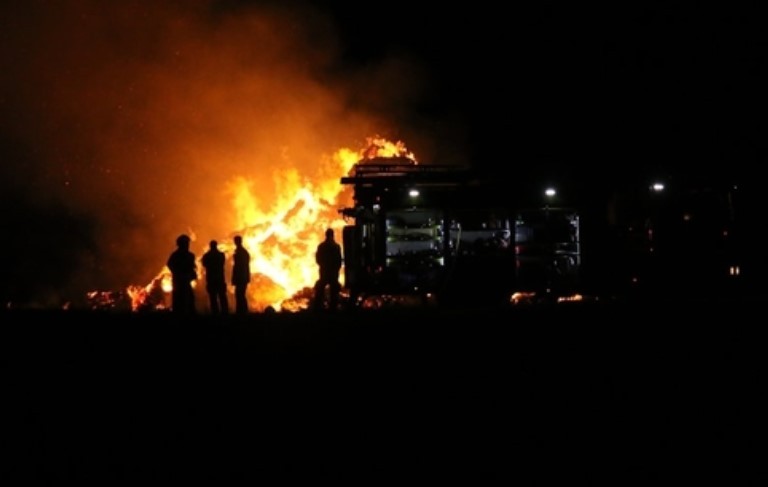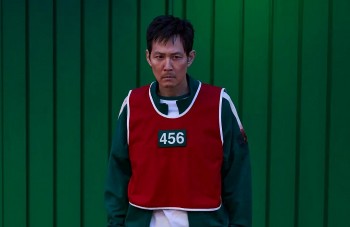Revealed: The Real Cause Behind Mexican Navy Ship’s Deadly Crash into Brooklyn Bridge
A peaceful international voyage turned tragic when the Mexican Navy’s tall training ship, ARM Cuauhtémoc, collided with the Brooklyn Bridge on Saturday evening, killing two sailors and injuring at least 19 people. As authorities race to determine the root cause of the crash, early findings point to a critical mechanical failure that stripped the ship of its ability to steer or slow down in one of the world’s busiest waterways.
This maritime disaster has not only shocked New York but also drawn international attention, raising urgent questions about safety protocols, ship maintenance, and navigational challenges in dense urban harbors.
 |
| A Mexican Navy ship after it was damaged having run into into the Brooklyn Bridge |
Timeline of the Crash: How Events Unfolded
-
Date & Time: Saturday, May 17, 2025, at 8:30 p.m.
-
Location: East River, under the Brooklyn Bridge, NYC
-
Ship: ARM Cuauhtémoc, a tall sailing ship of the Mexican Navy
-
Crew on board: 277 personnel
-
Casualties: 2 confirmed dead, 19 injured (4 seriously)
-
Destination: The ship was departing Pier 17 in Lower Manhattan en route to Iceland after participating in Fleet Week New York 2025
Mechanical Failure: The Leading Cause Behind the Brooklyn Bridge Crash
Initial findings from the National Transportation Safety Board (NTSB) and U.S. Coast Guard confirm that the ARM Cuauhtémoc suffered a sudden loss of mechanical and navigational control just minutes after departure.
Key preliminary findings:
-
The ship lost engine propulsion and steering capability.
-
The strong East River currents pushed the powerless vessel directly into a stone pillar of the Brooklyn Bridge.
-
The mast, fully illuminated for ceremonial purposes, slammed into the bridge’s underside, causing catastrophic injuries to sailors standing nearby.
“The captain lost power and mechanical function. The current caused the ship to go right into the pillar of the bridge,” said NYPD Chief Wilson Aramboles in a press briefing.
Experts say:
“Even a brief power loss in the East River can be devastating. It’s one of the most challenging tidal zones in North America,” noted Maritime Analyst Linda McGraw.
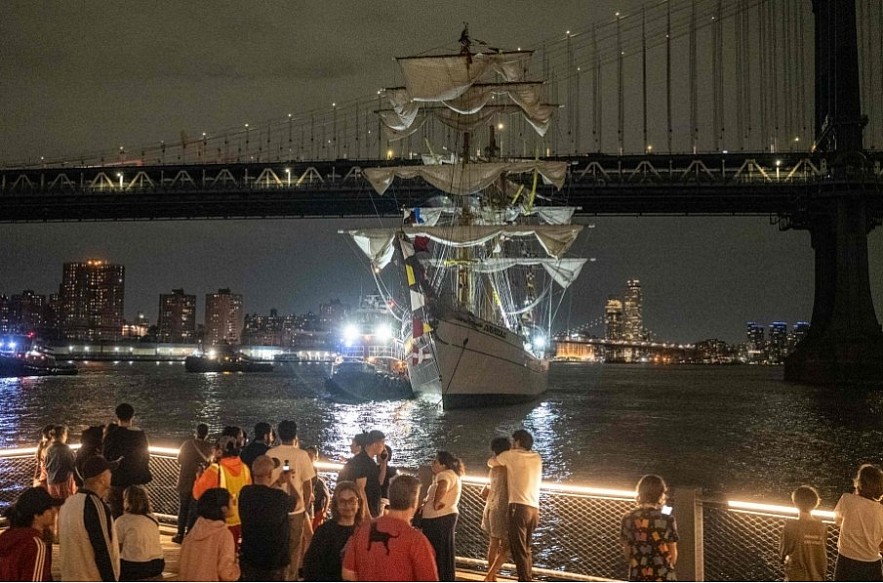 |
| two dead after Mexican Navy ship collides with Brooklyn Bridge |
Ship Crew’s Emergency Response
Despite the mechanical malfunction, the Mexican Navy crew is being praised for their swift actions:
-
Emergency brakes and anchors were deployed within 60 seconds.
-
No one was thrown into the water thanks to safety harnesses and emergency drills.
-
New York emergency services arrived within minutes, already alerted by distress signals.
Their response likely prevented a far more deadly disaster in such a densely populated maritime zone.
Status of the Brooklyn Bridge: Was It Damaged?
Following a rapid inspection by New York City engineers, Mayor Eric Adams confirmed:
-
The Brooklyn Bridge sustained no structural damage.
-
The bridge was reopened to traffic just after midnight.
-
Continuous monitoring will remain in place for the next 72 hours.
“We’re grateful this wasn’t worse. Our hearts go out to the victims and their families,” Mayor Adams posted on social media.
Investigation: What Comes Next?
The NTSB and U.S. Coast Guard are working jointly with the Mexican Navy to conduct a multi-phase investigation, which will include:
-
Analyzing electrical and propulsion system logs
-
Reviewing maintenance records and repair history
-
Interviewing the captain, engineers, and deck officers
-
Retrieving data from the ship’s voyage event recorder (VDR)
A full public report is expected within 90 days, with an interim summary due in early June 2025.
About ARM Cuauhtémoc: A Floating Ambassador of Mexico
The ARM Cuauhtémoc is a revered Mexican Navy barque, named after the last Aztec emperor. Since its commissioning in 1982, the ship has:
-
Traveled to over 60 countries
-
Served as a training vessel for cadets
-
Acted as a symbol of peace and maritime diplomacy
This voyage was part of the vessel’s annual goodwill tour across the Atlantic, with planned stops in Iceland, Norway, and the United Kingdom.
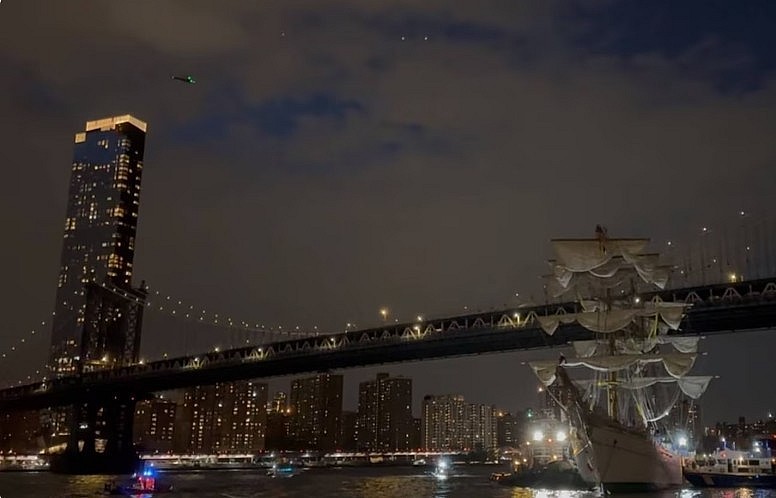 |
| A Mexican Navy sailing training vessel collided with the Brooklyn Bridge on Saturday, May 17 |
International Response and Public Sentiment
The crash has sparked a global outpouring of grief and solidarity:
-
Mexican President issued condolences and declared a day of mourning.
-
Tributes poured in on social media under hashtags like #CuauhtémocCrash and #BridgeCollision2025.
-
Thousands visited Pier 17 to lay flowers and pay tribute.
Many questioned whether tall ships should be allowed to navigate under major bridges without tug assistance, especially during high tide or low visibility.
FAQs: Cause of the Mexican Navy Ship Crash
Q: What caused the Cuauhtémoc to crash into the Brooklyn Bridge?
A: A mechanical failure caused loss of steering and engine power. Strong river currents pushed the vessel into a bridge support.
Q: Were there fatalities?
A: Yes, two sailors were killed and 19 others injured.
Q: Was the Brooklyn Bridge damaged?
A: No structural damage was found. The bridge has since reopened.
Q: Who is conducting the investigation?
A: The NTSB, in coordination with the U.S. Coast Guard and Mexican Navy.
Q: What is the current status of the ship?
A: The Cuauhtémoc is docked at Pier 17 pending further inspection and repairs.

